How many famous artists can you name? Five? Ten? Maybe more?
Now, how many of those artists were men? How many were women?
Chances are, the first names that popped in your head were those of art history’s most recognizable male artists. If you thought of any women, ask yourself: were they among the most famous artists of all time – women like Frida Kahlo and Georgia O’Keeffe who have transcended the art world’s historic predication towards favoring men to become household names?
As is often the case, women are frequently left out – or completely erased – from history. In the art world, when tastes and aesthetics change rapidly as new artforms are popularized, women artists find their work pushed aside in favor of their male counterparts. In her 1971 essay, “Why Have There Been No Great Women Artists?” renowned feminist art historian Linda Nochlin wrote, “Things as they are and as they have been, in the art world as in a hundred other areas, are stultifying, oppressing and discouraging to all those, women among them, who did not have the good fortune to be born white, preferably middle class and, above all, male.”
With the country celebrating the centennial of the 19th Amendment until 2020, which granted women the right to vote, cultural institutions across New York – like the Hyde Collection in Glens Falls – are doing their part to honor women’s historical impact on art, culture, and history in New York State.

The Hyde Collection was founded by Charlotte Pruyn Hyde in 1952, with a founding mission to “maintain a Museum for the exhibition of the permanent collection and to promote and cultivate the improvement of the fine arts, for the education and benefit of the residents of Glens Falls and vicinity and the general public.” Eleven years later, the Hyde opened as a museum, quickly establishing itself as “one of the Northeast’s exceptional small art museums,” with a permanent core collection acquired by Charlotte and her husband, Louis Hyde.
Since its founding over 50 years ago, the Hyde has become known for its impressive exhibitions of classic American and European art, with work by world-renowned impressionists like Edgar Degas and Pierre-Auguste Renoir housed in their core collection. But in August, the forgotten women of the impressionist movement will finally get their due with the Hyde’s two upcoming exhibitions, Jane Peterson: At Home and Abroad, and Changing the Landscape: Women Impressionists from the Thomas Clark Collection.
Who was Jane Peterson?
“Jane Peterson probably was the best known of women artists of her day,” says Canning, who has been working on the design of the At Home and Abroad exhibition in preparation for its opening on August 5.
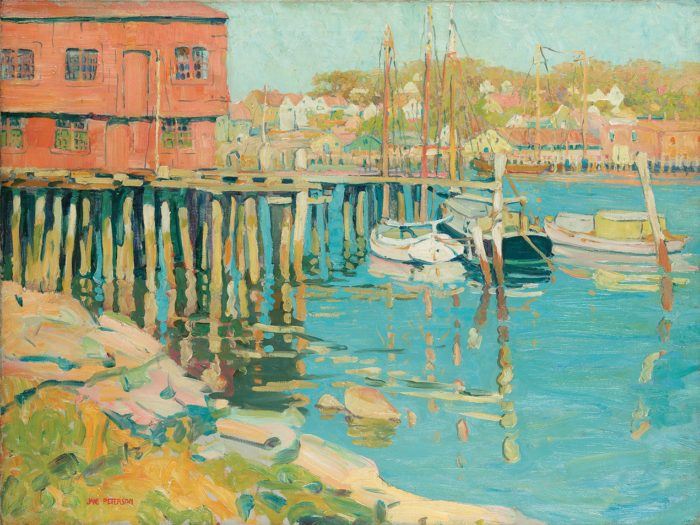
Jane Peterson (American, 1876-1965), Gloucester Fleet, n.d., Oil on canvas, 30 ¼ x 40 ¼ in. (76.84 x 102.24 cm), Collection of David and ‘Weezie’ Reese. Photo © Christie’s Images/Bridgeman Images
Born to a middle-class family in mid-19th century Illinois, Jane Peterson – whose given name was Jennie – quickly rose to prominence in the art world of the late 19th and early 20th centuries. She attended classes at the newly formed Pratt Institute in Brooklyn and the Art Students League in New York City. After completing her studies, Peterson, like most young artists of her time, traveled abroad to Europe to study under artists like Frank Brangwyn in Venice and London, Joaquín Sorolla y Bastida in Madrid, and Jacques Blanche and Andrew L’Hote in Paris.
“She was just a sponge to the different styles that she saw,” says Canning, pointing out that the influence her teachers and, later, her contemporaries had on her artistic style evolution is seen in the flatter, more stylized forms of a particular painting of horseshoe crabs. “These make an interesting kind of contrast of how her style develops from impressionism, and then the influence of expressionism, the bright colors of Fauvism, the flat linear drawing of Van Gogh…that’s what I’m trying to sort of focus on in the gallery.”
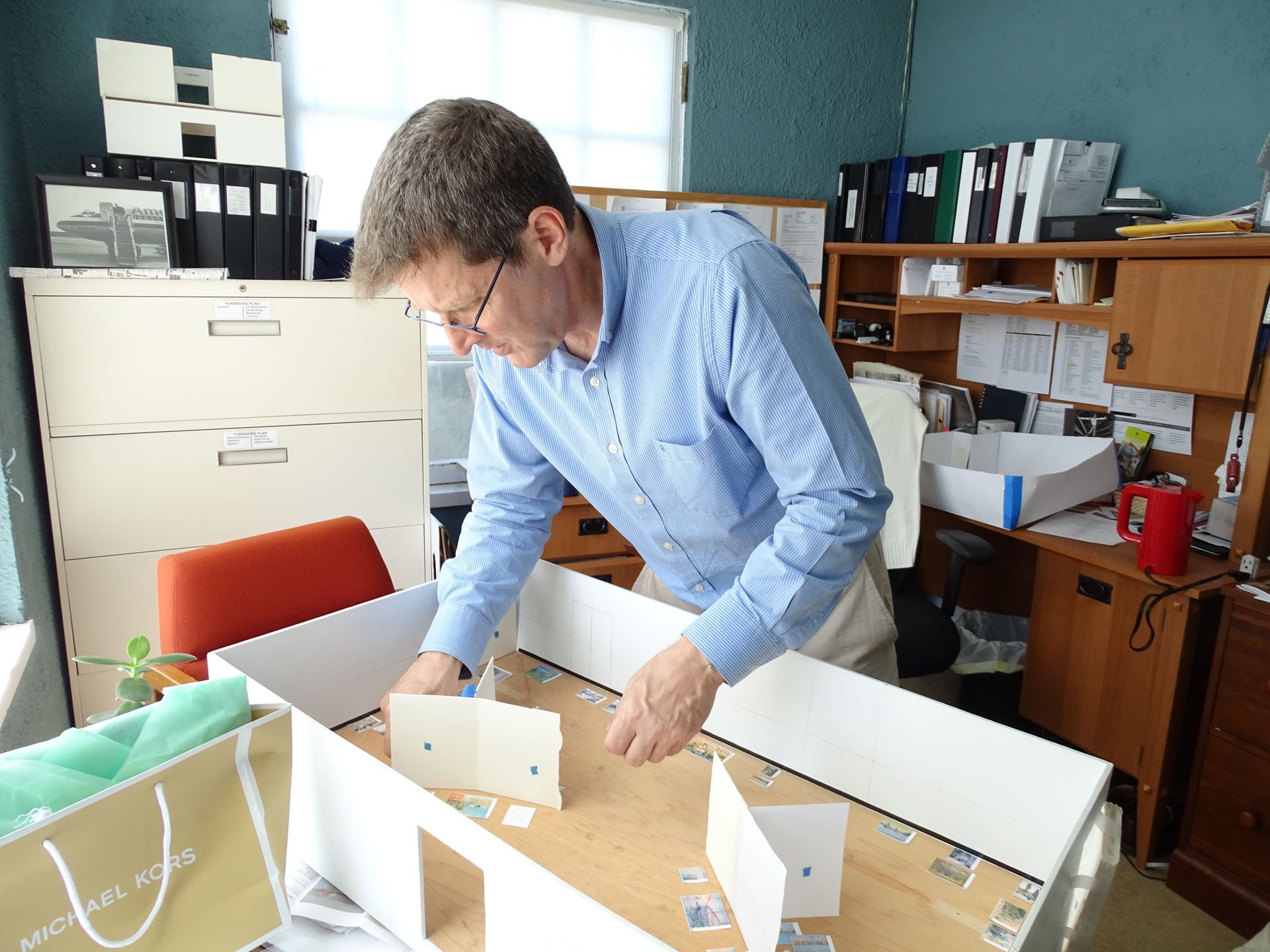
After finishing her European tour and a solo trip to Egypt, Peterson returned to the United States, where she became a pillar of the arts colonies on the East Coast. While her pieces from her travels across Europe throughout her life inform the “Abroad” section of the Hyde’s exhibition, her paintings of scenes around Gloucester, MA, are the core of the “At Home” side of the gallery, along with scenes from her transcontinental travels with her friend and patron, American designer Louis Comfort Tiffany.
Changing the Landscape
While Peterson has continued to be a well-known name amongst American art historians – Canning says most of his colleagues were familiar with her work when they began working on curating the exhibit – she is only one among many women impressionists of her time that is still remembered in modern times.
Impressionism as an art style held a special affinity for women artists of the time, who were almost exclusively restricted in what – or who – they could paint. “Impressionism was this new style that was pushing social boundaries, and of course it’s only by pushing the boundaries that women get the right to be able to leave the home and go to art school,” says Canning. “Society in general was opening up for women to be out there.”
With the influence of “les trois grandes dames” of impressionism (Mary Cassatt, Marie Bracquemond, and Berthe Morisot) – who were taken under the wings of Claude Monet, Edgar Degas, and Edouard Manet – women who aspired to be artists in a time when doing so would be considered improper and nothing more than a hobby were given a chance to show the world what they were capable of by joining the impressionist movement.
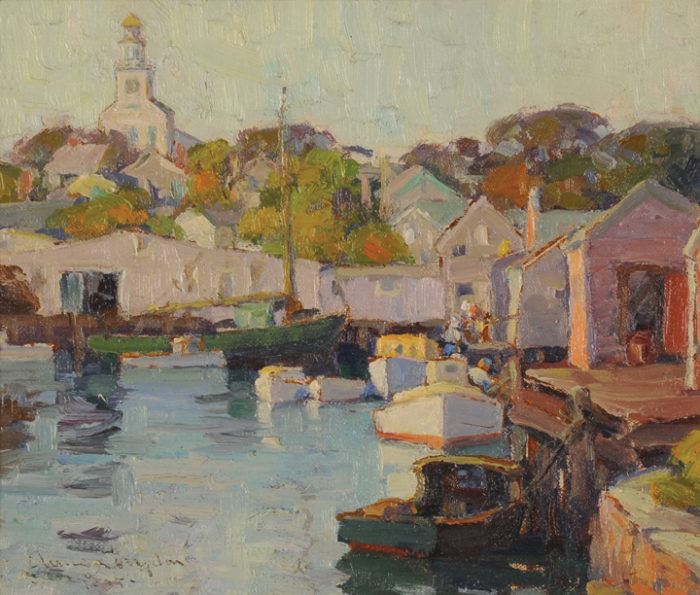
Anne Ramsdell Congdon (American, 1873-1958), Nantucket Harbor, 1935, oil on canvas board, 8 x 10 in., The Thomas Clark Collection of American Paintings.
The main difference between Peterson and her contemporaries, like Mabel Woodward, Louise Upton Brumback, and Anne Ramsdell Congdon (all of whom will be exhibited in the Thomas Clark show), is that one of them managed to survive the test of time, and the others were forgotten. This was not for lack of talent, merit, or renown in their lifetimes, Canning says. Post-war styles of abstraction and pop art changed the tides of aesthetics in the art world, which led to the erasure of most of the women who had become significant members of the impressionist and expressionist movements.
“They were all known, they were all reviewed,” Canning says of the women impressionists that will be showcased in the Changing Landscapes exhibition, which is made up of Albany art collector Thomas Clark’s extensive collection of 20th century impressionist art. “After their deaths, this whole generation of impressionists’ reputations just decline into obscurity. But it’s a more rapid decline for the women artists.”
The Hyde is hoping to make up for this decline by showcasing Thomas Clark’s impressive collection of work by generally forgotten women. “There are these artists with skill and reputations to be rediscovered, and the Clark Collection lets us do that.”
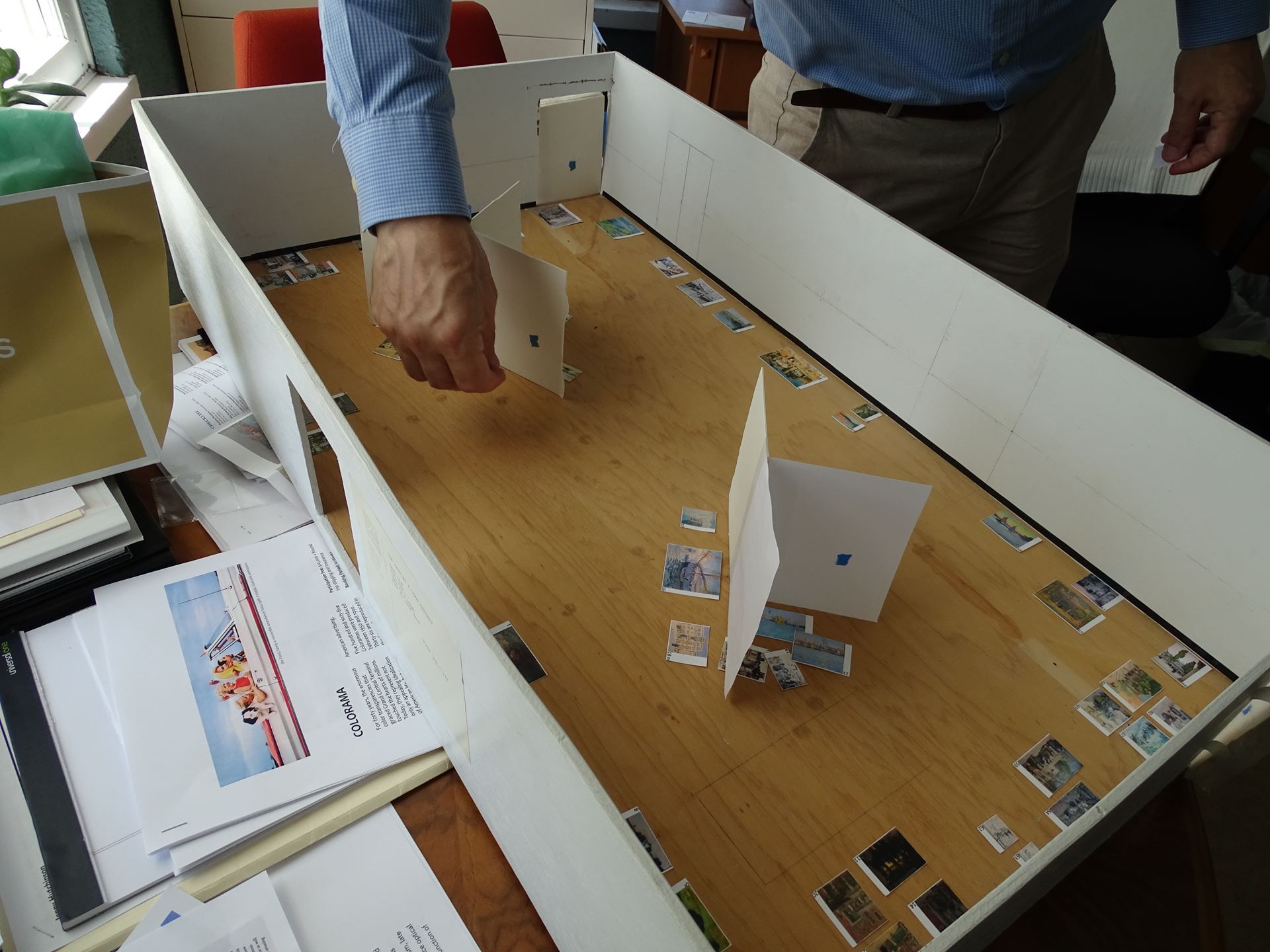
The Clark exhibition will feature 21 female contemporaries of Jane Peterson, fortuitously complementing the At Home and Abroad exhibition. Thomas Clark, a collector from the Capital Region, has been building his collection of impressionist work for several decades, with a special focus on landscapes. “He’s really got some depth within that,” Canning says. “He has gone for paintings that appeal to him, that show skill in use of color and composition and handling of paint, and isn’t worried so much about the name recognition of the artist.” This, Canning says, is how the Hyde has been able to draw the group of 21 women from Clark’s collection.
Canning has tried to make sure that it will be clear that the art market of the time opened up to train and promote women impressionists. “It’s really our mistake to have forgotten them,” he says.
Why It Matters
While Canning says that the Hyde’s shows have been very 20th century-focused this year, with exhibitions of Alphonse Mucha and Rockwell Kent during the first half of the year, the Jane Peterson and Thomas Clark shows hold an important place in the museum’s plan for engaging their audience.
“We’re at a moment where we are taking stock of women’s place in American society,” he says, especially at a moment in time when the erasure of women throughout history and art is more prevalent and political than ever. Both exhibitions allow for the rediscovery and reclamation of exceptional women artists, who through no fault of their own, were forgotten.
Canning’s own goals as the curatorial director at the Hyde will be advanced by the Jane Peterson and Thomas Clark shows. “I’m constantly thinking about providing variety, always having a solid base in what I know our audience likes, but introducing something new,” he says.
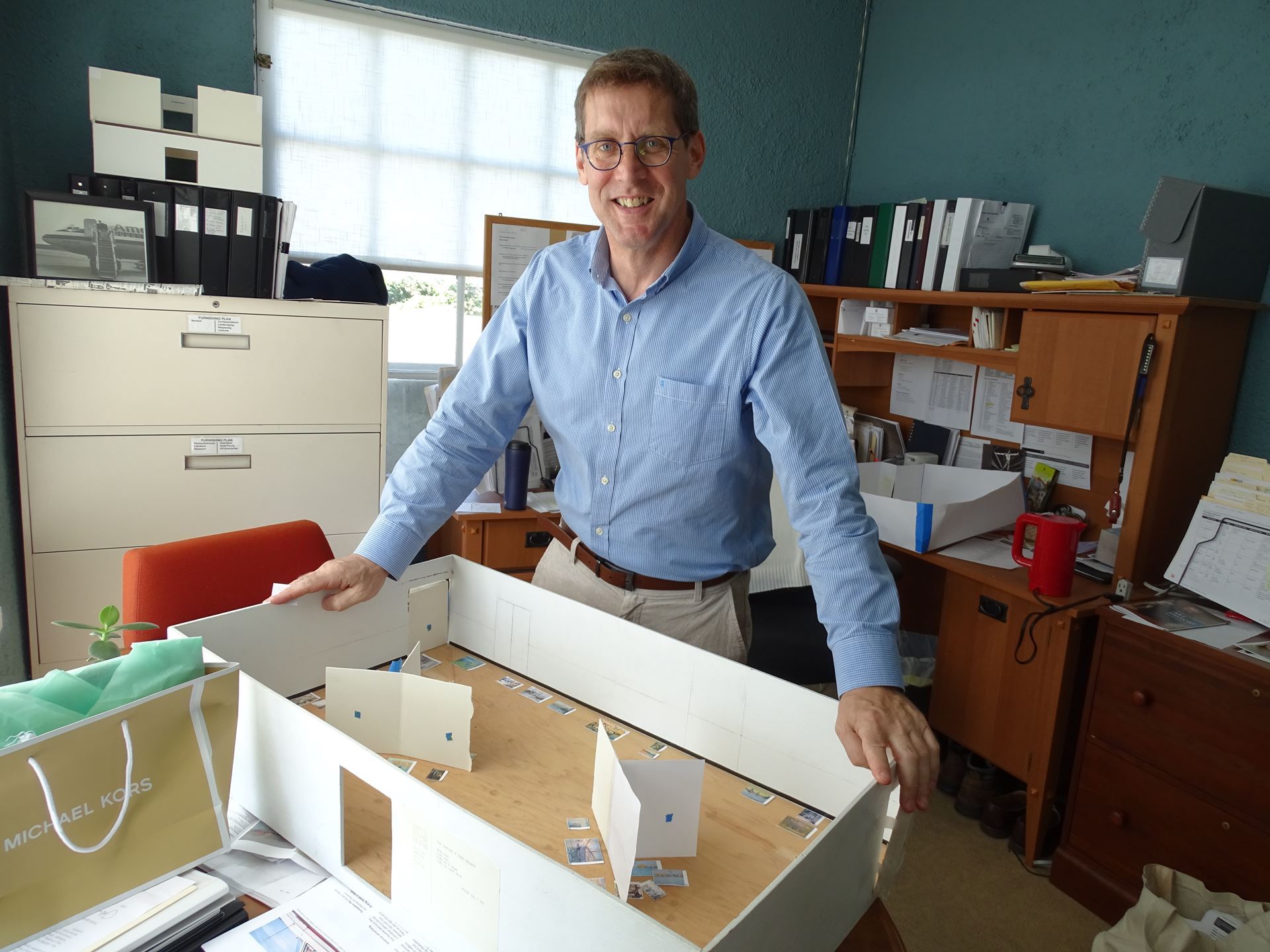
Since the Hyde is known for their impressive collection of classic American and European art, along with a collection of contemporary work, Canning wants to ensure that their audiences will be exposed to those contrasting styles. “The Hyde needs to keep up to date, but we also need to serve an audience.”
In the coming year, Canning will continue to expose the Hyde’s audiences to art and artists of whom they might not be aware, like the women in impressionism exhibitions. The Hyde will be finishing out 2018 with an impressive show of Japanese prints from the art galleries at Syracuse University. In 2019, visitors will be treated to exhibitions featuring photography, urban scene paintings from John Sloane, and prints by Pablo Picasso, Georges Braque, and Fernand Léger. The most important thing, he says, is that visitors leave the shows knowing that the Hyde will be completely different the next time they come.
“Wherever I’ve worked, I’ve always faced the same comment: ‘Oh, I went when I was a child. Is there anything new here?’” Canning laughs. “Yes! The Hyde changes. It’s worth coming back, because you will find something new. It’s intended to interest and challenge you, it is intended to both give you depth and greater understanding, and to broaden your horizons.”
Jane Peterson: At Home and Abroad and Changing the Landscape: Women Impressionists from the Thomas Clark Collection open at the Hyde Collection August 5. Visit their website for more information and visitation hours.
Words and photos by Sarah Heikkinen.
